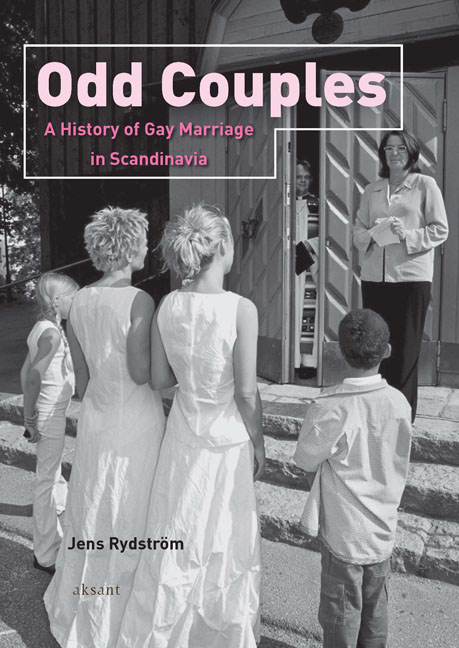Book contents
- Frontmatter
- Contents
- Preface
- Introduction
- Chapter One The Road to Registered Partnership
- Chapter Two Is Marriage what we want?
- Chapter Three Gay Marriage in Mainstream Politics
- Chapter Four Implementation
- Chapter Five Gender and Marriage Statistics
- Chapter Six The Next Step
- Summary and Conclusions
- Notes
- Appendix: Political Parties and Gay and Lesbian Rights Groups in Scandinavia
- References
- Index
Chapter Three - Gay Marriage in Mainstream Politics
Published online by Cambridge University Press: 20 January 2021
- Frontmatter
- Contents
- Preface
- Introduction
- Chapter One The Road to Registered Partnership
- Chapter Two Is Marriage what we want?
- Chapter Three Gay Marriage in Mainstream Politics
- Chapter Four Implementation
- Chapter Five Gender and Marriage Statistics
- Chapter Six The Next Step
- Summary and Conclusions
- Notes
- Appendix: Political Parties and Gay and Lesbian Rights Groups in Scandinavia
- References
- Index
Summary
During the twentieth century, the Scandinavian countries saw the establishment of a fairly stable five-party system following two basic divisions: that between work and capital and that between urban and rural interests. This led to the establishment of large workers’ parties, large agrarian parties, and large conservative parties that defended the interests of the capital owners. Next to these three class-based party formations, smaller ideology-based parties evolved. The communist or left socialist parties on the one hand and the liberal parties on the other generally attracted between 5 and 10 percent each of the voters. This stable five-party structure was challenged by the emergence of new political parties in the 1970s and 1980s. Radical right-wing parties were created as a reaction to high taxes. Christian parties were established or strengthened as a reaction to liberal abortion laws and the release of pornography. Finally, environmentalist or Green parties became established in Finland and Sweden. The right-wing populist parties generally had a neo-liberal agenda and as such they sometimes had a positive stance on gay and lesbian rights issues. However, strong reactionary forces ‒ and a macho leadership ‒ within these parties eventually led to a homophobic attitude. The position of the green parties in the political spectrum was initially unclear, but for the most part they consisted of younger people who, when asked, would be in favour of gay and lesbian rights. The Christian democratic parties, finally, were consistently opposed to such rights, since they had been created by conservative Christians to defend traditional values.
In the late sixties and early seventies, political work for same-sex relationship regulation began in the smaller ideological parties, the left socialist or liberal parties. The larger parties were either opposed to gay and lesbian rights (like the conservative and centre parties) or uninterested or split over the issue (like the social democrats). It is important to remember, however, that this picture is simplified, since no party was unanimous in its support for, or resistance to, gay and lesbian rights. In Sweden, there was an important presence of Christian freethinkers in the People's Party before the Christian Democratic Party managed to attract most of them. They were generally opposed to gay and lesbian rights and when their influence in the liberal People's Party diminished, its commitment to gay and lesbian rights issues grew stronger.
- Type
- Chapter
- Information
- Odd CouplesA History of Gay Marriage in Scandinavia, pp. 91 - 114Publisher: Amsterdam University PressPrint publication year: 2012



